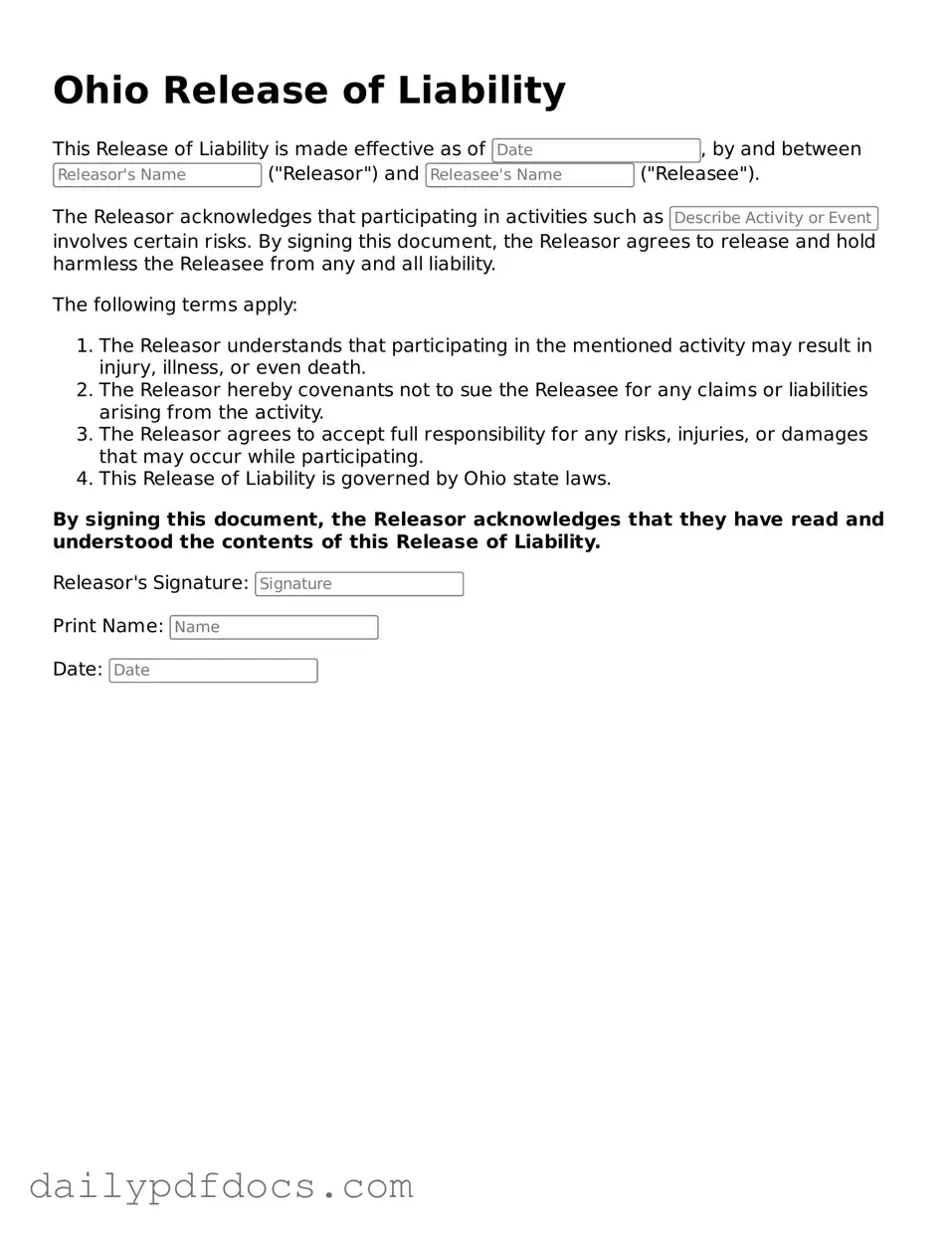What is an Ohio Release of Liability form?
The Ohio Release of Liability form is a legal document that helps protect individuals or organizations from being held responsible for injuries or damages that may occur during specific activities. By signing this form, participants acknowledge the risks involved and agree not to hold the organizer liable for any accidents or injuries that may happen as a result of their participation.
Who should use a Release of Liability form in Ohio?
This form is typically used by businesses, organizations, or individuals who host events or activities where there is a potential risk of injury. Common examples include sports leagues, recreational facilities, and adventure activities like zip-lining or rock climbing. If you are organizing an event that involves physical activity, using this form can be a prudent step to protect yourself legally.
Is a Release of Liability form legally binding in Ohio?
Yes, a properly executed Release of Liability form can be legally binding in Ohio. However, certain conditions must be met for it to be enforceable. The language should be clear, and the risks involved must be adequately explained. Additionally, the participant must voluntarily sign the form, indicating their understanding and acceptance of the risks.
Can minors sign a Release of Liability form in Ohio?
Minors cannot legally sign a Release of Liability form on their own. Instead, a parent or legal guardian must sign on their behalf. This ensures that the adult understands the risks involved and agrees to the terms of the release for the minor. It’s essential to ensure that the form is clear and that the guardian acknowledges their responsibility.
What should be included in an Ohio Release of Liability form?
An effective Release of Liability form should include several key elements: a clear statement of the risks involved, a description of the activity, the participant's acknowledgment of those risks, and a waiver of liability. Additionally, it should include spaces for signatures and dates, as well as contact information for the organization or individual providing the activity.
How can I ensure that my Release of Liability form is valid?
To ensure that your Release of Liability form is valid, consider consulting with a legal professional who is familiar with Ohio law. They can help you draft a document that meets legal standards. Additionally, make sure that the form is easy to read, and avoid using overly complex language. Clarity is key in ensuring that participants understand what they are signing.
What happens if someone gets injured despite signing the Release of Liability?
Even if someone has signed a Release of Liability form, there are circumstances where the organizer may still be held liable. For example, if there is evidence of negligence or if the injuries resulted from actions that were not disclosed in the form, the waiver may not protect the organizer. Each case is unique, and courts will consider various factors when determining liability.
